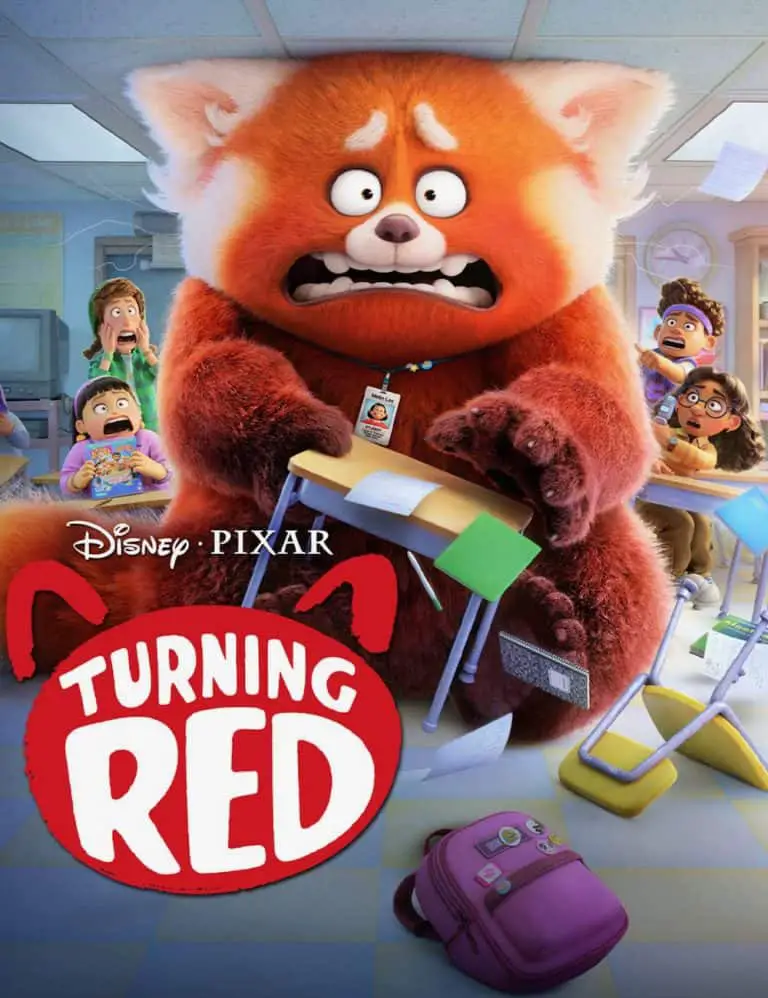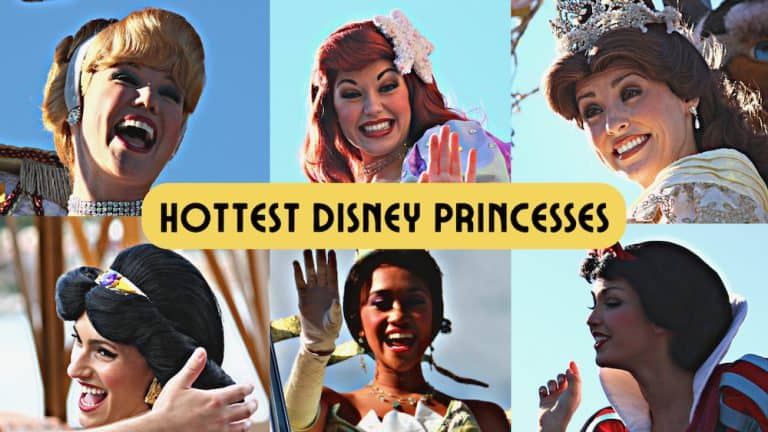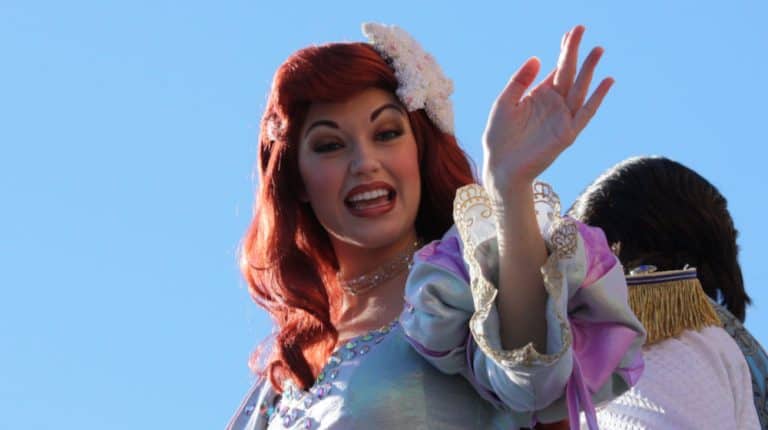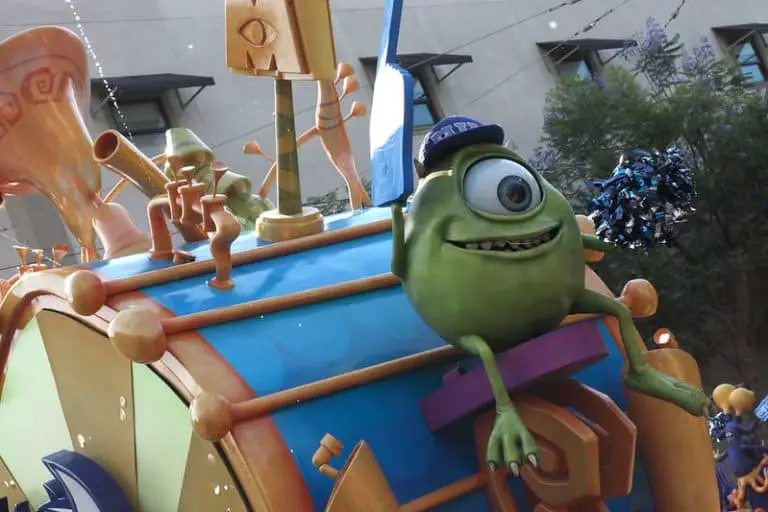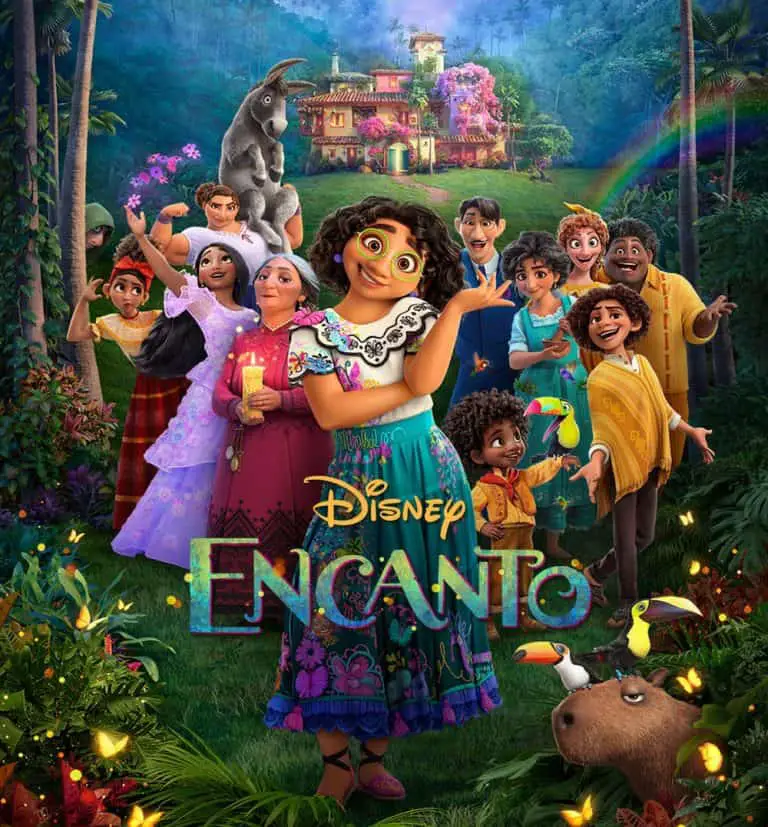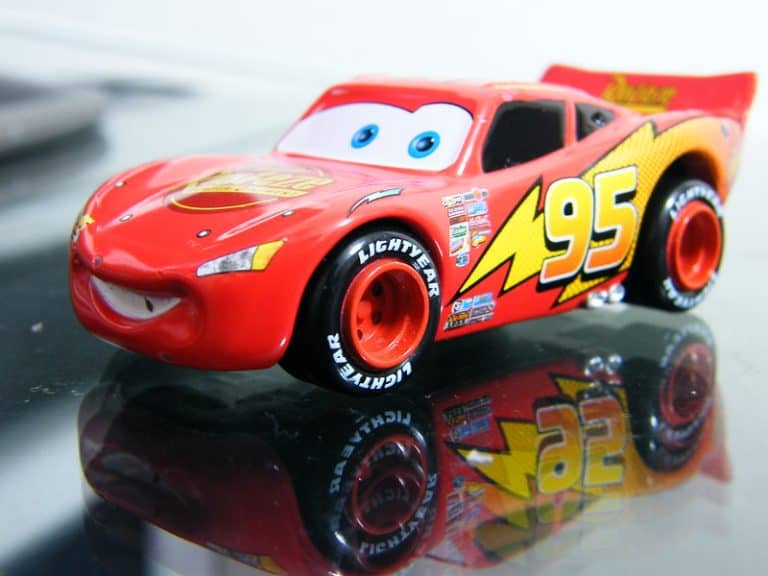15 Best Disney Characters That Start with P You’ll Love
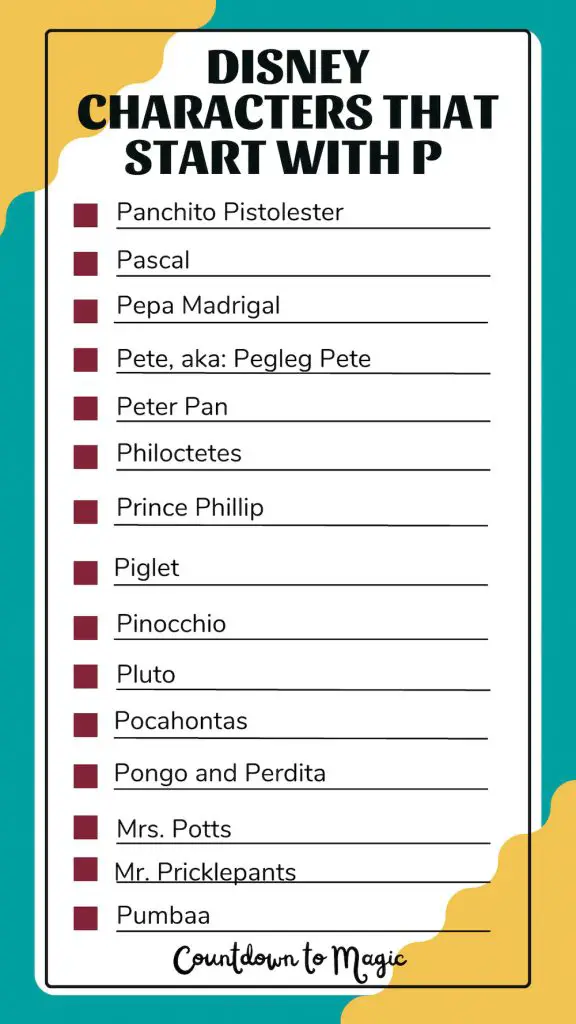
Whether you’re talking about heroes, princesses, villains, or sidekicks, there are Disney characters that appeal to everyone. So here are some of the prominent, passionate, and praiseworthy Disney characters that start with P!
Disney Characters Starting with the Letter P
Panchito Pistoles, Pascal, Pepa Madrigal, Pegleg Pete, Peter Pan, Philoctetes, Prince Phillip, Piglet, Pinocchio, Pluto, Pocahontas, Pongo and Perdita, Mrs. Potts, Mr. Pricklepants, and Pumbaa are the top Disney characters that start with P.
Panchito Pistoles (Three Caballeros, 1944)
Panchito Pistoles (full name given as Panchito Romero Miguel Junipero Francisco Quintero Gonzalez III) is a fun-loving Mexican rooster that is one-third of the bird trio known as the Three Caballeros. The Three Caballeros was a film released to celebrate Donald Duck’s tenth anniversary, and features gifts (and adventures) from Donald’s Latin American friends: Panchito and the Brazilian parrot, José Carioca.
Panchito is a tall, lanky rooster with brightly colored feathers who wears an oversized sombrero. Early appearances of Panchito show him wearing pistol holsters around his waist, and he plays an acoustic guitar.
He is a friendly, flirtatious bird who loves fiestas, dancing, and pretty women. His last name, “Pistoles”, probably refers to the two pistols he originally carried in holsters around his waist. In later appearances in other Disney animated features, the pistols were omitted, although in an appearance in “Ducktales” he carries cell phones in his holsters.
In addition to his boisterous, fun-loving personality, he loves his native country of Mexico and enjoys sharing Mexican history and traditions with his friends.
- You Might Also Like: Disney Characters That Start with D
Pascal (Tangled, 2010)
Pascal is Rapunzel’s loyal sidekick/pet chameleon. He has been with her since Rapunzel was a very young girl when he ran to her tower after being attacked by a venomous snake. Rapunzel then used her magic healing abilities to save him. Since that time, Pascal was her only true friend and confidant during the years she was trapped in the tower.
Pascal never speaks, although he conveys his mood and encouragement to Rapunzel by changing colors. He’s unwavering in his loyalty and protective instincts toward Rapunzel, and is a driving force in convincing her she needs to leave her tower.
I love that Disney animators chose an unconventional animal to be Rapunzel’s pet! It would have been easy to go with a conventionally “cute and cuddly” animal like a chipmunk or bird. The choice of a reptilian pet for a princess is unusual and fun. The talented animators were able to give Pascal an adorable “cuddly” personality in spite of not being a furry woodland animal.
- You Might Also Like: Disney Characters That Start with J
Pepa Madrigal (Encanto, 2021)
Pepa Madrigal is a member of the magical Madrigal family; she is the middle child of Alma (Abuela) and Pedro Madrigal. Her magical gift is that she can control the weather with her emotions. She is a loving wife to Felix and a doting mother to her three children.
She has a slightly anxious, overly emotional personality, but her husband Felix is able to keep her calm. She’s aware of the need to control her emotions so that her mood swings don’t bring on wild, chaotic weather.
Although she’s friendly and well-intentioned, her emotions do sometimes get the best of her. It was her emotional state that brought about a hurricane on her wedding day when her brother Bruno teased her that “it looks like rain”. In spite of her annoyance with him at that time, she missed her brother and greeted Bruno with an emotional hug when he finally rejoined the family.
Pete, aka: Pegleg Pete (Debuted, 1925)
Pete, sometimes known as “Pegleg Pete”, is the oldest recurring animated Disney character. He’s a large, boisterous cat that originally had one wooden leg. He first debuted in “Alice Solves The Puzzle”, one of several “Alice Comedies” that combined live-action and animated characters.
In his debut, his appearance is more bear-like than feline, but Disney historians confirm this is the original incarnation of Pete. He also appeared in several “Oswald The Lucky Rabbit” cartoons before becoming the arch-nemesis of Mickey Mouse in “Steamboat Willie” (1928).
Pete’s early appearances showed him as a loud, intimidating villain who often attempted to kidnap Minnie Mouse. In addition to kidnapping, bullying, lying, cheating, and stealing seemed to be his main occupations. Modern versions of Pete now portray him consistently with two legs instead of with the wooden leg.
Over time, Pete has become more of the “annoying neighbor” type than a villainous villain. In the 1990s Disney TV series “Goof Troop”, Pete and his family lived next door to Goofy and his son Max. Pete annoyed Goofy and took advantage of his good nature, but loved his wife and family. Pete again showed up as an overbearing neighbor in “A Goofy Movie” and its sequel “An Extremely Goofy Movie”.
- You Might Also Like: Disney Princesses with Brown Hair
Peter Pan (Peter Pan, 1953)

Peter Pan is the main character in the 1953 animated movie of the same name. Peter is no ordinary boy, of course. He has refused to grow up and lives in the magical realm of Neverland with his troop of “Lost Boys” and his best friend Tinker Bell. He loves adventure, and much of his time in Neverland is spent visiting a local Indian tribe, swimming with mermaids, and battling his nemesis, Captain Hook.
Peter’s origins are never explained in detail in the Disney version of his story. Walt Disney himself explained Peter’s identity by stating, “He is twelve years old forever simply because he refuses to grow up beyond that comfortable age. Most remarkable of all, he knows where Never Land is and how to get there.”
Peter meets the Darling children (Wendy, Michael, and John), when he chases his escaping shadow into their bedroom through an open window. After Wendy sews his shadow back onto him, he tells them tales of Neverland and invites them to visit.
Peter is bold, adventurous, and extremely confident. His confidence can come across as a little bit of arrogance. He has a natural charm, that makes everyone in Neverland (except the pirates) love him. Peter is loyal and protective of his friends; especially the Lost Boys. He has a great love of playing and listening to adventure stories and epitomizes the sense of childlike wonder that Disney brings out in all of us.
In spite of being a perpetual child (who professes a hatred for adulthood), Peter can be quite mature in some circumstances. He doesn’t hesitate to put himself in danger to save his friends from Captain Hook, and even though he’d like them to stay, he escorts the Darling children safely back to their home in London.
Philoctetes (Hercules, 1997)
Philoctetes, better known as simply “Phil”, is a cranky older satyr in ancient Greece. He is a “trainer of heroes”, who decided to retire after many of his former students suffered major defeats. He longs to train a hero that will succeed in all his endeavors, bringing fame and respect for Phil.
His appearance is that of a half-man/half-goat, with horns on his head a beard, a tail, and goat hooves instead of feet. He has a very gruff personality and can be quite impatient when training someone. He likes things done his way and is strict with his training regimen. In spite of his grumpy demeanor, he also has a big heart and can be quite compassionate.
He is reluctant to come out of retirement and train young Hercules, having been disappointed by the legendary defeats of his past students. His life goal is to train a hero that will be brave and successful, and people will recognize him as the hero’s trainer. This goal is finally achieved at the end of the movie when people point to a constellation in the sky in the shape of Hercules and proclaim “That’s Phil’s boy!”
Prince Phillip (Sleeping Beauty, 1959)
Prince Phillip is the absolute ideal of a fairytale prince. He’s handsome, romantic, kind, brave, and he dances! What’s not to love about this guy? He’s also the first Disney prince to have an actual name, and the first Disney prince to take an active role in defeating the villain.
Prince Phillip and Princess Aurora were betrothed in childhood by their parents. When the two accidentally meet in the forest and instantaneously fall in love, Phillip has no idea his beautiful peasant girlfriend is actually his secret betrothed Princess. Being true to his heart, he tells his father, King Hubert, about the girl he has met and convinces his father that he should marry the girl he loves instead of a stranger.
His bravery is tested when he is captured by Maleficent and imprisoned in her dungeon. After being rescued (and informed of Aurora’s true identity) by the Three Fairies, Phillip doesn’t hesitate to fight Maleficent in her terrifying dragon form.
Between telling his father he doesn’t want to go through with an arranged marriage, and then fighting an evil dragon, I’d have to say that Courage is one of Phillip’s most outstanding qualities!
In the final scene of “Sleeping Beauty,” Phillip and Aurora dance together in the castle ballroom, much as they danced together in the forest the first time they met.
Piglet (debut 1968, Winnie The Pooh And The Blustery Day)
Piglet is one of the residents of the Hundred Acre Wood and is the best friend of Winnie The Pooh. He has appeared in four theatrical featurettes, 19 feature-length films, and many TV shows and specials. Surprisingly, Piglet was not included in the first Winnie The Pooh film (Winnie The Pooh and The Honey Tree, 1966), because Disney wanted to feature their original character of Gopher.
Piglet is, just like his name, a small pink piglet. He usually wears a striped pink sweater and sometimes a scarf around his neck. He’s quite insecure and timid, with a stutter that comes out when he gets especially anxious. He embarrasses easily, and worries about disappointing his friends on their numerous adventures.
In spite of his nervous nature, Piglet always tries to overcome his fears, especially if it involves helping his friends in any way. Even though Piglet worries about their opinions, his friends think highly of him and appreciate Piglet’s generosity and friendship.
- You Might Also Like: Winnie the Pooh Characters and Their Mental Disorders
Pinocchio (Pinocchio, 1940)
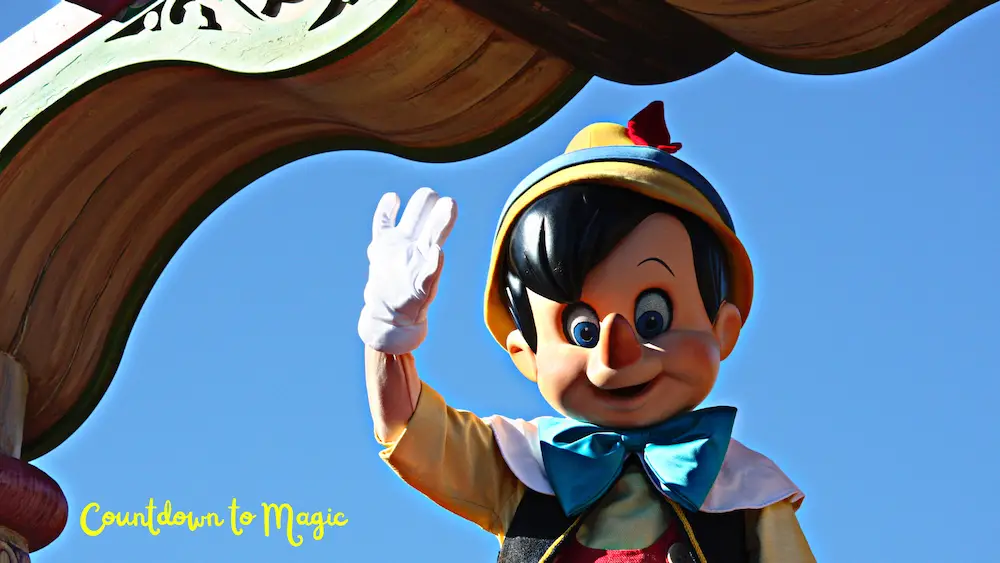
Pinocchio was the second full-length animated feature film produced by Walt Disney Co., after the success of Snow White in 1937. The film was the first animated feature to win a competitive Academy Award.
Pinocchio is a wooden puppet magically brought to life thanks to the wish of his father/creator, Geppetto. He’s an adorable puppet who longs to become a real boy someday. He has bright blue eyes and thick black hair, with a large smile. The most noticeable feature about him is the fact that his nose grows every time he tells a lie. Fortunately, his nose shrinks to normal once he confesses the truth.
Even though his heart is in the right place, Pinocchio often finds himself in trouble. He’s overly trusting and naive, therefore is easily taken advantage of. Like many children, he doesn’t like to listen to the adults in his life, even though he truly loves Geppetto.
In spite of his innocent nature, Pinocchio really is very clever. He figures out how to escape from Pleasure Island before he is fully transformed into a donkey, and when swallowed by Monstro the whale he comes up with an escape plan for himself and Geppetto.
Pinocchio’s story is a bit of a cautionary tale, albeit one with a happy ending. Disney’s version of the story is much more light-hearted than the original book, where Pinocchio is a mischievous and disrespectful character.
Pluto (debuted 1930)
Pluto first appeared on the screen in 1930, in an animated short titled “The Chain Gang”. It wasn’t until 1931 that he appeared as Mickey Mouse’s pet in “The Moose Hunt”.
Pluto is a yellowish-tan mixed-breed hound dog. He is absolutely devoted to his best pal, Mickey. He’s playful, protective, and always eager to help Mickey with anything. Unlike many Disney characters, Pluto is not anthropomorphic; he’s a regular pet dog. He doesn’t speak except for barks and growls and doesn’t wear clothes. Even though he is animated as a pet, he is one of the most expressive Disney characters, communicating with humorous facial expressions and movements.
Like many dogs, Pluto isn’t fond of cats. This dislike has caused tension between him and Minnie Mouse’s pet cat, Figaro. Pluto is also a favorite foil for the chipmunks Chip and Dale.
Pocahontas (Pocahontas, 1995)
Pocahontas is the daughter of Chief Powhatan, a Native American chief in the state of Virginia. She is the first American Princess, and the first Disney Princess to be based on a historical person. Although she doesn’t belong to a traditional royal family, she is the daughter of a chieftain, so she has been designated an official Disney Princess based on that lineage.
She’s very strong-willed and highly spiritual. Her love of nature and animals is second only to her bravery. Her independent personality leads her to refuse when her father tries to arrange a marriage for her, and it is notable that at the end of the film she chooses not to leave for Europe with John Smith.
Pocahontas has a mystical connection to nature and to the spirit of her deceased Mother. She is able to call on the nature spirits for help and guidance and has somewhat prophetic dreams. She’s also a natural peacekeeper, who was willing to put herself in harm’s way to prevent a war between her people and the invading Europeans.
Pongo and Perdita (101 Dalmatians, 1961)
I’m lumping Pongo and Perdita (the main characters in 101 Dalmatians) together because they are such a strong team. These two are the parents of 15 Dalmatian puppies of their own, as well as 84 adopted Dalmatian puppies they rescue from Cruella DeVil.
Pongo is the more playful of the two, with a fun and carefree personality. Perdita is a bit more calm, and she worries more than her husband, Pongo. Perdita tends to be nervous when Cruella comes to visit the home, and hides from her. Both of them are great parents who will do anything for the safety and well-being of their puppies.
When the puppies are kidnapped by Cruella’s henchmen, these two brave dogs set out on a dangerous adventure to rescue them. They’re helped along the way by other animals, but it is Pongo and Perdita who attack Cruella’s henchmen just as they were about to kill the puppies to make coats from their fur.
When they realize there are far more puppies that have been kidnapped than their own, they don’t even hesitate to bring all of them home with them. These two canines are beautiful examples of loving and strong parents.
Mrs. Potts (Beauty And The Beast, 1991)
Mrs. Potts was the head housekeeper of the Beast’s castle before it was put under a curse. When the spoiled prince was transformed into “the Beast”, Mrs. Potts became a teapot and her children became teacups.
She has a sweet maternal nature, but (like any mother) also can be stern when needed. She is the first member of the household to greet Belle’s father when he wanders into the castle, and also the first member of the household to greet Belle when she arrives.
Mrs. Potts cares for everyone in the castle and has a calming influence on all. She’s patient and is the voice of reason when it comes to helping Belle and the Beast fall in love with each other. While she is obviously sympathetic towards Belle, she also tries continually to help the Beast learn to control his temper.
Mr. Pricklepants (Toy Story 3, 2010)
Mr. Pricklepants is a stuffed hedgehog toy. He wears traditional lederhosen and a German alpine hat. He was made in Germany and is part of the Waldfreunde collection of premium imported plush toys. This is perhaps a reference to Steiff stuffed animals, a real-world famous maker of premium teddy bears and plush toys.
Mr. Pricklepants considers himself a serious actor during playtime, and is insistent about the other toys never “breaking character”. In fact, “staying in character” is of the utmost importance, even when other toys are trying to have a conversation with him. He likes Woody, and after playtime asks if Woody is a trained actor; high praise from Mr. Pricklepants!
He can be a little bossy during playtime, and has a habit of “shushing” the other toys if they break character or get distracted. Because of this, Buttercup (a toy unicorn) refers to him as “Baron Von Shush”.
He is the one who warns Woody about how dangerous Lotso Bear is, and helps direct him to Sunnyside Daycare so he can rescue his friends. He’s also very welcoming when the toys move to Bonny’s house.
Pumbaa (The Lion King, 1994)
Pumbaa is a large African warthog, who lives in the jungle as an outcast with his best friend, Timon (a meerkat). The name Pumbaa is actually a Swahili word that translates as “to be foolish, silly, weak-minded”. This fits Pumbaa’s carefree, fun personality. Pumbaa is sometimes seen as being a little dim-witted and absent-minded, but he’s actually pretty clever.
Pumbaa (along with Timon) lives by the philosophy of Hakuna Matata; a Swahili phrase which literally translates to “no worries”. Young Simba joins the pair in living this laid-back lifestyle after he runs away from Pride Rock.
His personality is happy-go-lucky and boisterous, in spite of living as an outcast. Pumbaa originally lived with a group of warthogs but left the group to live alone because of a problem with extreme flatulence. His gassy problem was so bad it caused monkeys to fall from the trees and animals to flee from the watering hole! Because of these reactions, Pumbaa has some anxiety about socializing with other animals.
In spite of his reluctance to be around large groups of other animals, Pumbaa is an extremely loyal friend and can be pretty courageous when the situation calls for it. He demonstrates this when he first charges against the buzzards circling a young exhausted Simba in the jungle, and again when Simba and Nala battle against Scar and the hyenas for leadership of The Pridelands.
- If you enjoyed this article, please “like” our Countdown to Magic Facebook page!
